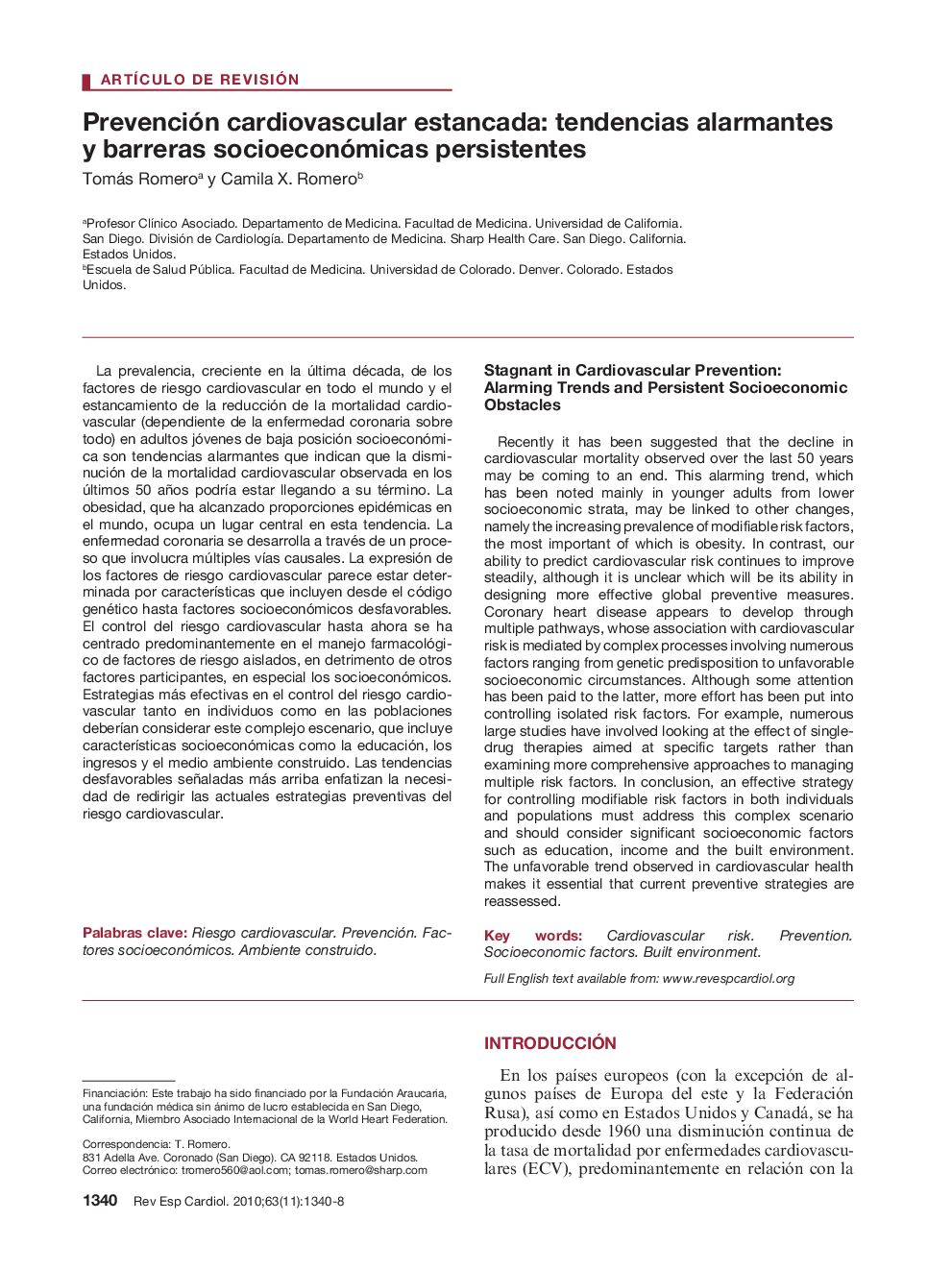| Article ID | Journal | Published Year | Pages | File Type |
|---|---|---|---|---|
| 3015083 | Revista Española de Cardiología | 2010 | 9 Pages |
Abstract
Recently it has been suggested that the decline in cardiovascular mortality observed over the last 50 years may be coming to an end. This alarming trend, which has been noted mainly in younger adults from lower socioeconomic strata, may be linked to other changes, namely the increasing prevalence of modifiable risk factors, the most important of which is obesity. In contrast, our ability to predict cardiovascular risk continues to improve steadily, although it is unclear which will be its ability in designing more effective global preventive measures. Coronary heart disease appears to develop through multiple pathways, whose association with cardiovascular risk is mediated by complex processes involving numerous factors ranging from genetic predisposition to unfavorable socioeconomic circumstances. Although some attention has been paid to the latter, more effort has been put into controlling isolated risk factors. For example, numerous large studies have involved looking at the effect of singledrug therapies aimed at specific targets rather than examining more comprehensive approaches to managing multiple risk factors. In conclusion, an effective strategy for controlling modifiable risk factors in both individuals and populations must address this complex scenario and should consider significant socioeconomic factors such as education, income and the built environment. The unfavorable trend observed in cardiovascular health makes it essential that current preventive strategies are reassessed.
Keywords
Related Topics
Health Sciences
Medicine and Dentistry
Cardiology and Cardiovascular Medicine
Authors
Tomás Romero, Camila X. Romero,
